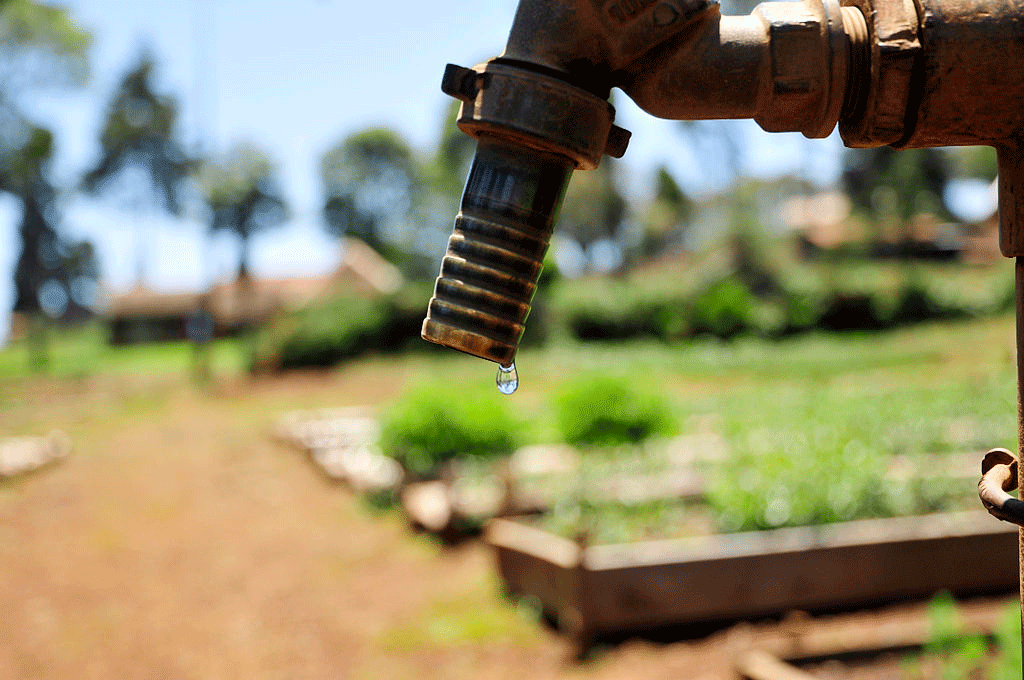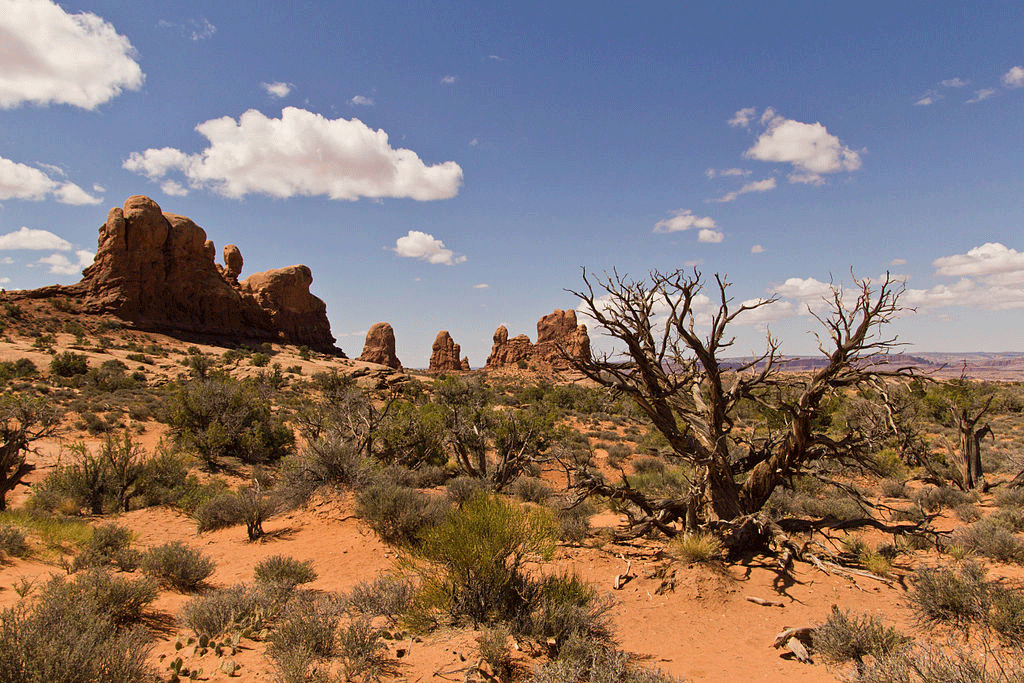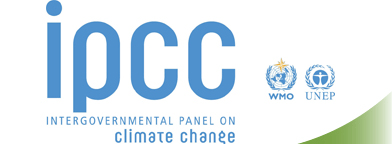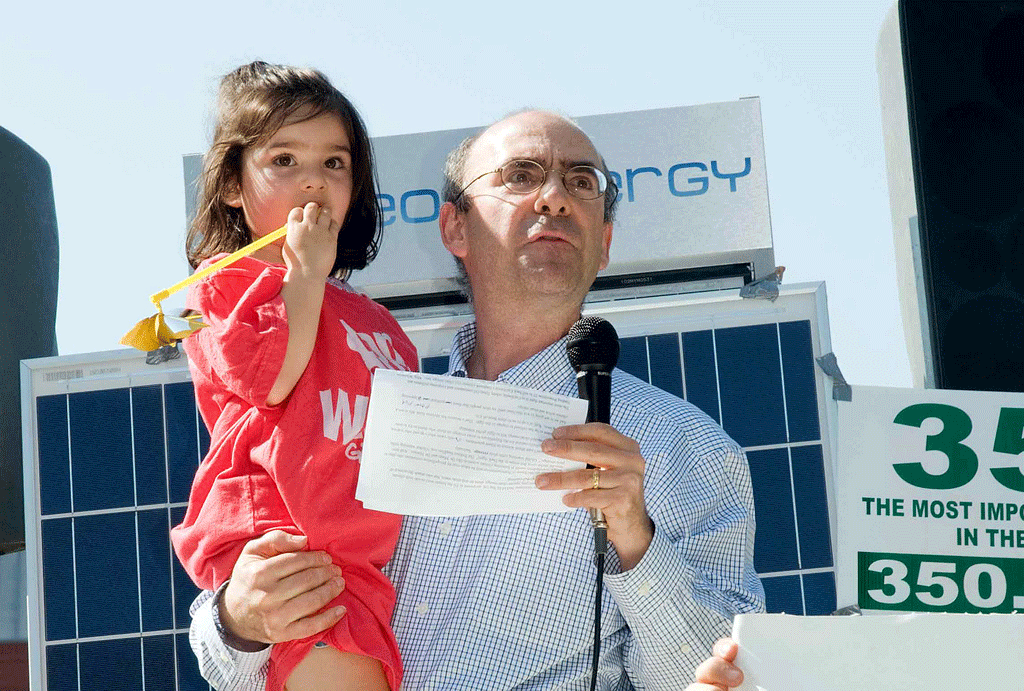Bargain Time For Climate Protection
Air Date: Week of April 18, 2014

The IPCC warns increasing temperatures will eventually stress water resources, making certain places inhospitable. (Photo: CIAT, Wikimedia Commons)
The 2104 climate mitigation report from the IPCC says the price of climate action today is cheap compared to what it will cost, if delays continue. Physicist Joseph Romm, who heads the blog Climate Progress, and host Steve Curwood discuss the IPCC’s cost-benefit analysis of immediate and delayed climate action.
Transcript
CURWOOD: From the Jennifer and Ted Stanley Studios in Boston and PRI, this is Living on Earth. I’m Steve Curwood. Urgent action now, or a king's ransom later. That’s the word from the Intergovernmental Panel on Climate Change. As part of the latest assessment, IPCC scientists did the math of the costs and benefits of cutting greenhouse gas emissions quickly and deeply. They found that stalling on action now will only raise the price to deal with the inevitable: rising seas, drought and climate-forced migrations. We asked former assistant energy secretary Joe Romm to weigh in on the report’s recommendations. He’s an author, physicist, and climate expert who heads the blog “Climate Progress”. Welcome to Living on Earth, Joe.
ROMM: Thanks for having me.
CURWOOD: How much has public perception changed about climate since you were Assistant Secretary for Energy?
ROMM: Oh, well that was back in the mid-1990s, and I think the general awareness is considerably higher, both about the impact of climate change and the solutions. And I think in particular, the off-the-charts extreme weather of the last three years has clearly influenced a lot of people and made them realize that climate change is right here, right now.
CURWOOD: Joe, how fair is it to say that the IPCC report claims that we’re headed for economic disaster if we don’t act quickly and strongly? Some folks say that it just costs too much in the economy to do the kind of things that are being recommended.

The UN’s IPCC says if we continue with business as usual, climate change will make many areas around the world arid and inhospitable, displacing millions of people. (Photo: Katsrcool, Wikimedia Commons)
ROMM: Well, I think that the new IPCC report lays to rest the notion that it is expensive to act, and, in fact, it actually says that stabilizing the climate would cost about 0.06 percent of economic growth per year. 0.06 percent. It would be the difference of having global economic growth of two percent versus 2.06 percent, so really a drop in the bucket. Many of the people who have spoken about this have made clear that we know we’re kind of running out of time. We have a closing window to aggressively cut emissions, and stabilize carbon pollution at levels that are viewed as not catastrophic, but that window is closing and every year that you wait adds more to the cost, and indeed it’s, you know, the International Energy Agency that previously calculated that every dollar you spend now saves $4 after the year 2020. The cost of inaction is enormous: steadily rising seas, ever worsening droughts, problems with food, problems with conflict, the heatwave, superstorms. And the co-chair of the committee that wrote this report said, “we cannot afford to lose another decade. If we lose another decade it becomes extremely costly to achieve climate stabilization.”
CURWOOD: The IPCCs chairperson Dr. Pachauri has said that, and I quote here: “The high-speed mitigation train needs to leave the station very soon, and all of global society needs to get on board.” What do you make of that statement?
ROMM: Well, we have to start being much more aggressive in the carbon-free sources. I mean the good news is that a couple of decades of major investment have really brought the cost of solar power down a stunning amount. I mean, we’re talking about a 99 percent drop in the cost of solar power in the last quarter century, and a very rapid drop in the cost of wind power, and other drops, of course, in batteries and energy efficient equipment. So the technology is there, but we have to ramp it up at a much faster rate if we are going to avoid, you know, destroying a livable climate.
CURWOOD: What about the notion that it’s really cheap to use carbon-polluting fossil fuels and other things, cutting trees, that add to global warming and that some folks say that we need to put a price on carbon so people make other choices.
ROMM: Well, absolutely. Right now, there’s no cost for carbon pollution, so people can just treat the atmosphere as an open sewer, whereas we know that carbon pollution has a significant economic cost to us and a cost in human health. So one obvious thing to do, which economists have always advised, is to make the cost of pollution equivalent to its harm to humans and society, and this IPCC report, when it’s looking at what is the most cost-effective way for the world to deal with climate change, a price on carbon is one of the top policies.

Logo for the Intergovernmental Panel on Climate Change (Photo: Wikipedia)
CURWOOD: Now what does the IPCC say about fossil fuels and our energy economy in general?
ROMM: It says that if you want to stabilize carbon pollution at livable levels, then you have to start very aggressively expanding some combination of renewable energy, energy efficiency, nuclear power, and carbon-capture and storage - and that’s where you capture the carbon pollution coming out of a fossil fuel plant - and that has to rapidly expand. We’re using more fossil fuels today than we can be using in 2050, so even in the case of natural gas, which some people see as a bridge fuel, it’s only a bridge fuel if it’s considerably less leaky that we know it is today because natural gas is mostly methane, and when it leaks out of the ground, it is a potent greenhouse gas. And secondly, we need to peak in natural gas consumption, you know, over the next decade or two, and then get down to levels below current levels by 2050. So the world really has to make a concerted global effort to get off carbon pollution and fossil fuels.
CURWOOD: What’s the time scale here, Joe? How quickly do we have to make these changes if we want to avoid these, well at least the most catastrophic, consequences of climate disruption?
ROMM: The IPCC warns that there are various tipping points that will, once they’re crossed, become very hard if not impossible to come back to. At some point, you have triggered a rate of sea level rise that really can’t be reversed. The same for changes in temperature rises, and one of the biggest concerns raised in the first report, was that you would trigger a defrosting of the permafrost in the Arctic region - Siberia, Canada, Alaska - and if it starts to defrost then it emits carbon both in the form of carbon dioxide and methane which is an even more potent greenhouse gas. So there is a great concern that we are approaching these thresholds and tipping points. And you know these are not the kinds of risks you would ever take in your personal life if you could avoid them at a low cost, and we know we can avoid them at a low cost. But it does mean this is the decade we have to act.
CURWOOD: What do you make of the IPCC’s recommendation in this report that involves the burning of biomass in conjunction with carbon capture and sequestration? First, tell me what that process is, and then tell me how effective you think it might be.
ROMM: There are some, but not a lot, of demonstrations around the world of burning fossil fuel, particularly coal, where instead of releasing the carbon dioxide into the atmosphere, you capture it and stick it underground in some sort of permanent repository like a well or a deep underground aquifer. Now if you could take biomass, which is just plant matter that just grew by absorbing CO2 and burn that and capture its carbon, then plants will take the carbon out of the air and the carbon capture would then put the carbon underground. You know, we are certainly going to have to have an all hands on deck approach because of all of our you know quarter century of dawdling. So I do think we’re certainly going to have to try carbon capture and storage with biomass, but it’s clear that no one would do that if there wasn’t a price on carbon.
CURWOOD: So what do you make of the IPCC essentially recommending a form of geo-engineering here -- if you burn biomass and then do carbon capture and sequestration...it’s a form of geo-engineering.
ROMM: We’re doing geo-engineering now by pumping massive amounts of carbon pollution into the atmosphere and heating the planet up, melting ice and changing the Earth’s climate patterns. There’s nothing wrong with trying to pull CO2 out of the air. I think it should be obvious to almost anybody that not putting the carbon dioxide into the air is always going to be a lot cheaper compared to sort of burning the coal when it’s just sitting there in the ground as solid carbon in the first place.
CURWOOD: Now, many people around the world are, of course, already feeling the impacts of climate change, on every continent. What does the report say about the need for adaptation?

Joe Romm holding his daughter and speaking out on climate change in Washington DC (photo: 350.org, creative commons 2.0)
ROMM: There’s no question that we are stuck with serious climate change, and, yes, everyone is going to have to adapt. There is no escape from that. The issue is that if you don’t take effort to mitigate, to reduce carbon pollution, most climate experts would tell you that adaptation can’t be accomplished in a meaningful sense of the word. The classic way that humans have adapted in the past is to abandon uninhabitable areas. The word “desert” comes from the same derivation as a deserted place. It is an abandoned place. It’s a place you can’t live anymore. Now, we are, according to lay science, turning more and more parts of the world into dust bowls and deserts, so you know people can adapt by simply leaving. Now clearly, if you are talking about places where hundreds of millions of people live, where are they going to go without creating some sort of strife?
This question of how we are going to feed nine billion people after the year 2050 is a great, great concern of the IPCC and that may require a very different farming system. We’re going to have to redesign our agricultural and food delivery system to minimize ways to maximize the use whatever arable land and freshwater we have. We are talking about deep and abiding change in the lives in the lives of billions of people. Change, by the way, we are forcing on them because of our greed and myopia, because we simply won’t spend this small fraction of our wealth to prevent decades if not centuries of a worsening climate that people will have to suffer through.
CURWOOD: Joe Romm is a Senior Fellow at the Center for American Progress where he edits the blog “Climate Progress”. Joe, thanks so much for taking the time with us today sharing your insights.
ROMM: Thanks for having me.
Links
Living on Earth wants to hear from you!
Living on Earth
62 Calef Highway, Suite 212
Lee, NH 03861
Telephone: 617-287-4121
E-mail: comments@loe.org
Newsletter [Click here]
Donate to Living on Earth!
Living on Earth is an independent media program and relies entirely on contributions from listeners and institutions supporting public service. Please donate now to preserve an independent environmental voice.
NewsletterLiving on Earth offers a weekly delivery of the show's rundown to your mailbox. Sign up for our newsletter today!
 Sailors For The Sea: Be the change you want to sea.
Sailors For The Sea: Be the change you want to sea.
 The Grantham Foundation for the Protection of the Environment: Committed to protecting and improving the health of the global environment.
The Grantham Foundation for the Protection of the Environment: Committed to protecting and improving the health of the global environment.
 Contribute to Living on Earth and receive, as our gift to you, an archival print of one of Mark Seth Lender's extraordinary wildlife photographs. Follow the link to see Mark's current collection of photographs.
Contribute to Living on Earth and receive, as our gift to you, an archival print of one of Mark Seth Lender's extraordinary wildlife photographs. Follow the link to see Mark's current collection of photographs.
 Buy a signed copy of Mark Seth Lender's book Smeagull the Seagull & support Living on Earth
Buy a signed copy of Mark Seth Lender's book Smeagull the Seagull & support Living on Earth

